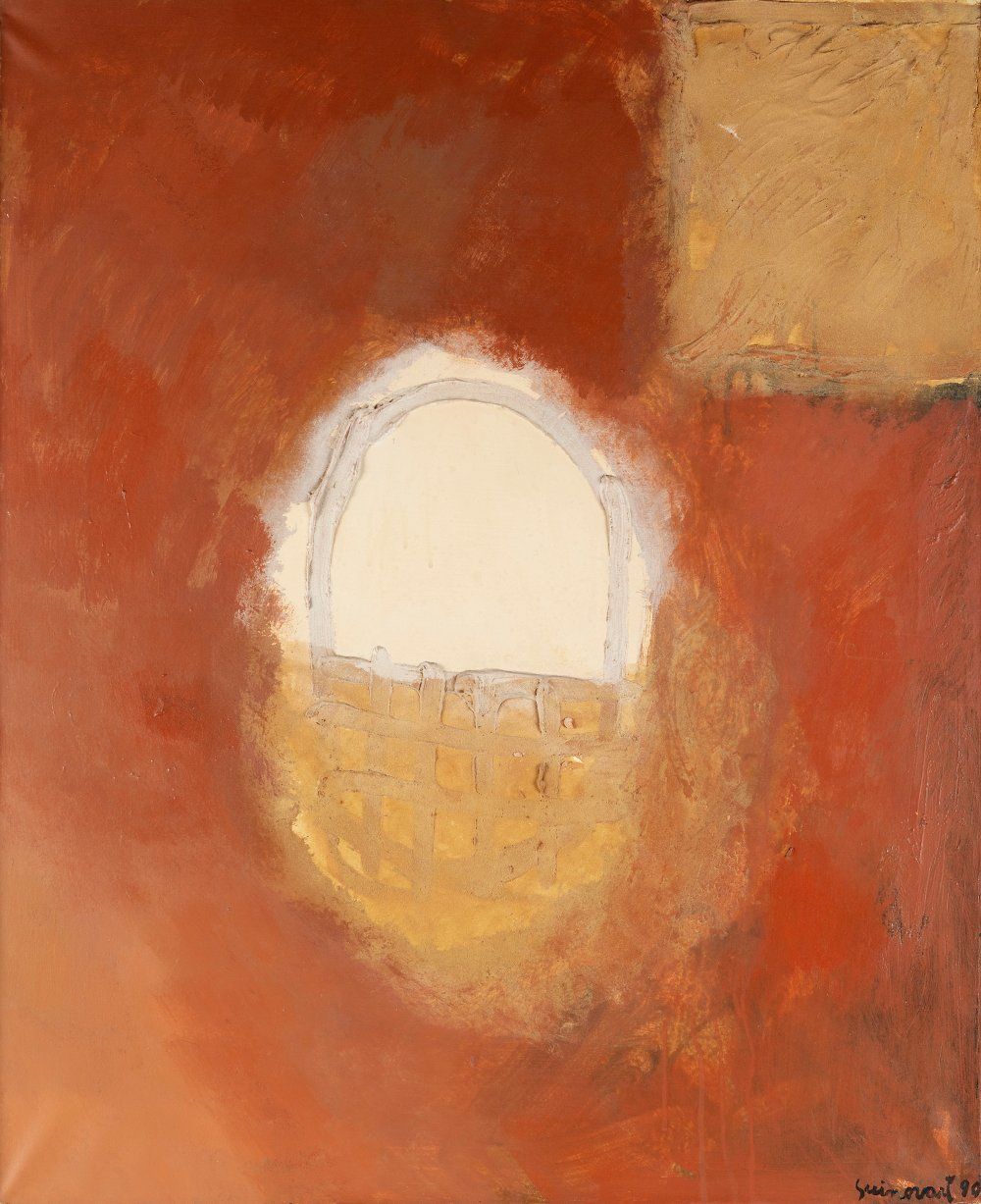Description
JOSEP GUINOVART BERTRAN (Barcelona, 1927 - 2007)._x000D_
JOSEP GUINOVART BERTRAN (Barcelona, 1927 - 2007)._x000D_ "Un cap", 1990._x000D_ Oil and material on canvas._x000D_ Signed and dated in the lower right corner and on the frame._x000D_ Size; 100 x 81 cm; 104 x 85 cm (frame)._x000D_ Josep Guinovart trained at the School of Master Painters, at the School of Arts and Crafts and in the classes of the FAD. He had his first solo exhibition at the Syra galleries in Barcelona in 1948. He soon acquired solid prestige, collaborated with Dau al Set and took part in the October, Jazz and Eleven Salons. In the 1950s, thanks to a grant, he lived in Paris, where he became deeply acquainted with the work of Cézanne and Matisse, who, together with Miró and Gaudí, were to be his most important influences. In 1955, together with Aleu, Cuixart, Muxart, Mercadé, Tàpies and Tharrats, he formed the Taüll group, which brought together the avant-garde artists of the time. Around 1957 he began an informalist and abstract tendency, with a strong material presence both through the incorporation of various elements and objects (burnt wood, boxes, discarded objects) and through the application of techniques such as collage and assemblage. From the 1960s onwards he moved away from the poetics of Informalism and began to produce works full of signs and gestures, which contain a strong expressive charge in the lines and colours. During the 1970s he systematically used materials such as sand, earth, mud, straw and fibre cement, and in the following decade he focused on experimenting with the three-dimensional projection of his works, which took the form of the creation of environments or spatial settings such as the one entitled Contorn-extorn (1978). He took part in the Biennials of Sao Paulo (1952 and 1957), Alexandria (1955) and Venice (1958, 1962 and 1982), and his prizes include the City of Barcelona, the National Plastic Arts Prize and the Generalitat's Plastic Arts Prize. In 1994, the Espai Guinovart, a private foundation with a permanent exhibition of the artist's work, was opened in Agramunt, Lérida. Interaction with the natural environment, incorporation of organic matter, abstraction and informalism... all this makes up one of the most original artistic personalities on the Spanish avant-garde scene. Although Guinovart was initially inclined towards a social type of figuration, his time in Paris led him to change direction, leading him to initiate a frenetic activity which he would continue after his return to Spain. In the late 1950s he became part of Informalism and was always eager to surprise, experimenting with textures, objects and colours to give realistic impressions to essentially abstract compositions. His work is forceful, even aggressive in terms of colour, light and density of matter. He is represented in the Museums of Modern Art in Barcelona, Madrid and Mexico City, the Museum of Open Air Sculpture in Santa Cruz de Tenerife, the Museo Nacional Centro de Arte Reina Sofía, the Museo de Bellas Artes in Bilbao, the Museo San Telmo in San Sebastián, the Museo Eusebio Sempere in Alicante, the Museo de Navarra in Tafalla, the Casa de las Américas in Havana, the Bocchum Museum in Germany, the Museo de Bellas Artes in Long Island, New York, and the Museo Patio Herreriano in Valladolid.
84
JOSEP GUINOVART BERTRAN (Barcelona, 1927 - 2007)._x000D_
